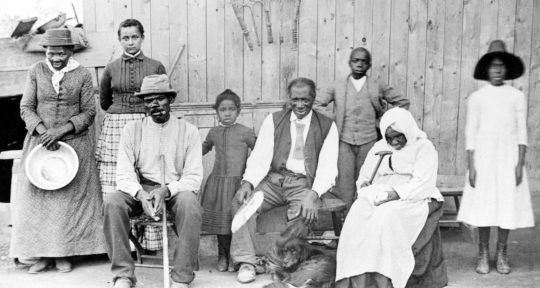What comes to mind when you think of South Dakota’s Wall Drug—other than the billboards? Western wear and jackalopes? Buffalo burgers, 5-cent coffee, and free ice water? Same here. I’ve been turning off Interstate 90 at exit 110 most of my life in search of all of those things and more. But probably unlike the majority of its 2 million annual visitors, Wall Drug’s allure for me has always been something else entirely: its collection of historical photographs.
My obsession began 10 years ago. I’d stopped with my dad and we had some time on our hands. We resolved to look at every painting in the Western art collection—more than 300 original oil paintings in total—while downing coffee and donuts. After a few hours—including a good 15 minutes with my favorite piece, Trail of Blood by Louis Glanzman—I wasn’t ready to be done with my immersion into the Old West. My attention turned to the photographs that had largely escaped my notice for decades.
Plainly attached to the wall, those portals into history fail to grab the attention of most folks. But still they hang, steadfast and available when one is ready for an unvarnished peek into the past. Tiny, blurry faces peer out from vignettes of frontier life. Gaunt cowboys rope steers and master unruly colts. Parades march through dusty South Dakota towns, including Wall, Belle Fourche, and Newell. Post-Civil War military personnel line up in front of their outposts. Native Americans pose—perhaps unwillingly—in front of teepees, with horses and cars, and in depictions of their everyday life.
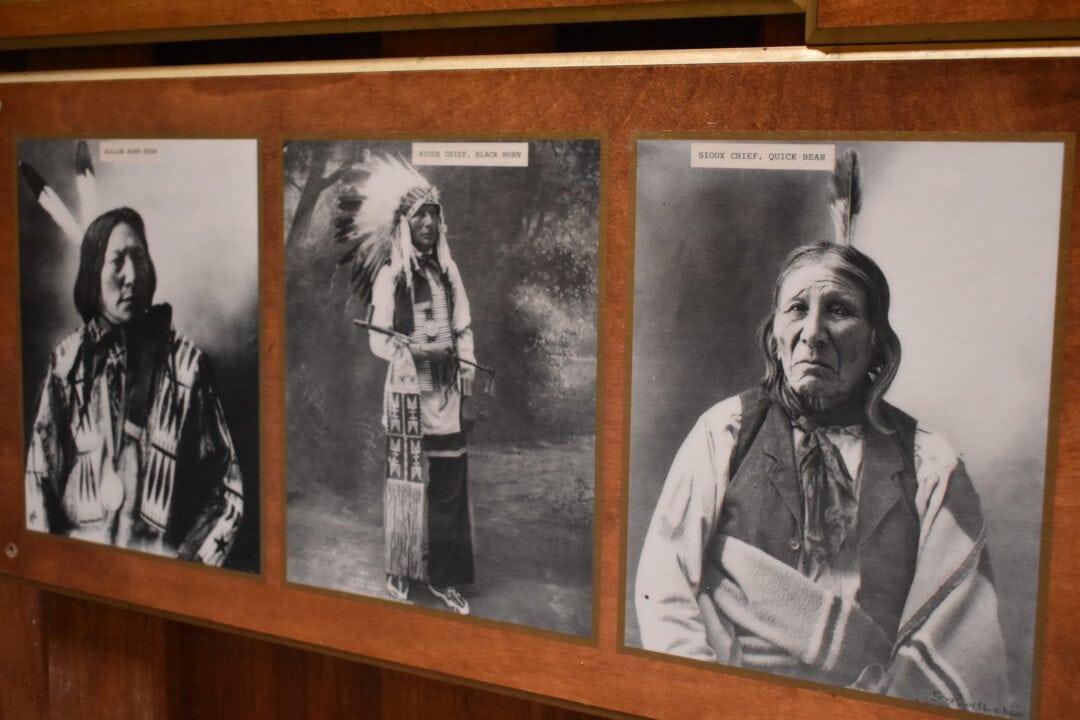
There are also many formal portraits of Native leaders from the area, especially in the backyard mall building behind the giant jackalope. There, in the shadow of a bellowing animatronic T-Rex, regal titles such as “Sioux Chief, Quick Bear” and “Sioux Chief, Black Horn” accompany their steady visages. Each invites a closer look and is enough to open entire chapters of collective history.
A stroke of curiosity
Of the many hundreds of varied photos, a good portion appear without context or explanation of any kind. Some have typewritten labels with dates and locations affixed to their faces. A select few feature crudely-scrawled descriptions of one or two words: “breakfast,” “Fields ranch,” or “wood hauler.”
One such image seems to confirm the mythical night spent around a campfire under the stars. A handful of men are pictured in their bedrolls among the grass and sagebrush. The handwritten label reads, “Better than any feather bed.” An example of 19th-century sarcasm, perhaps?
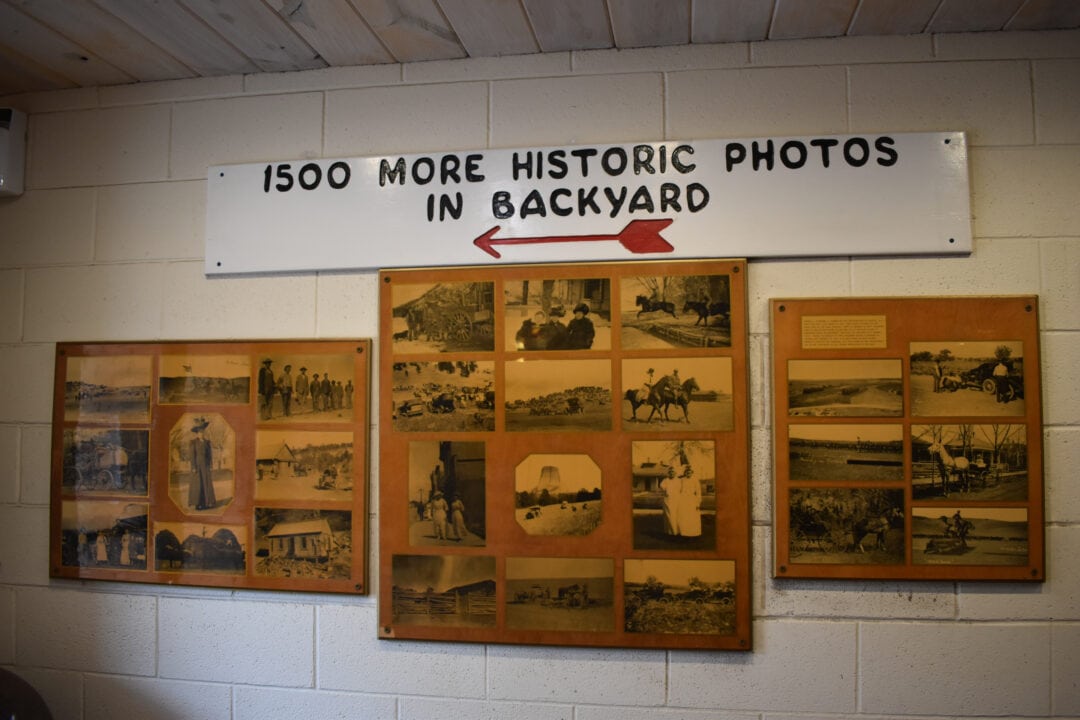
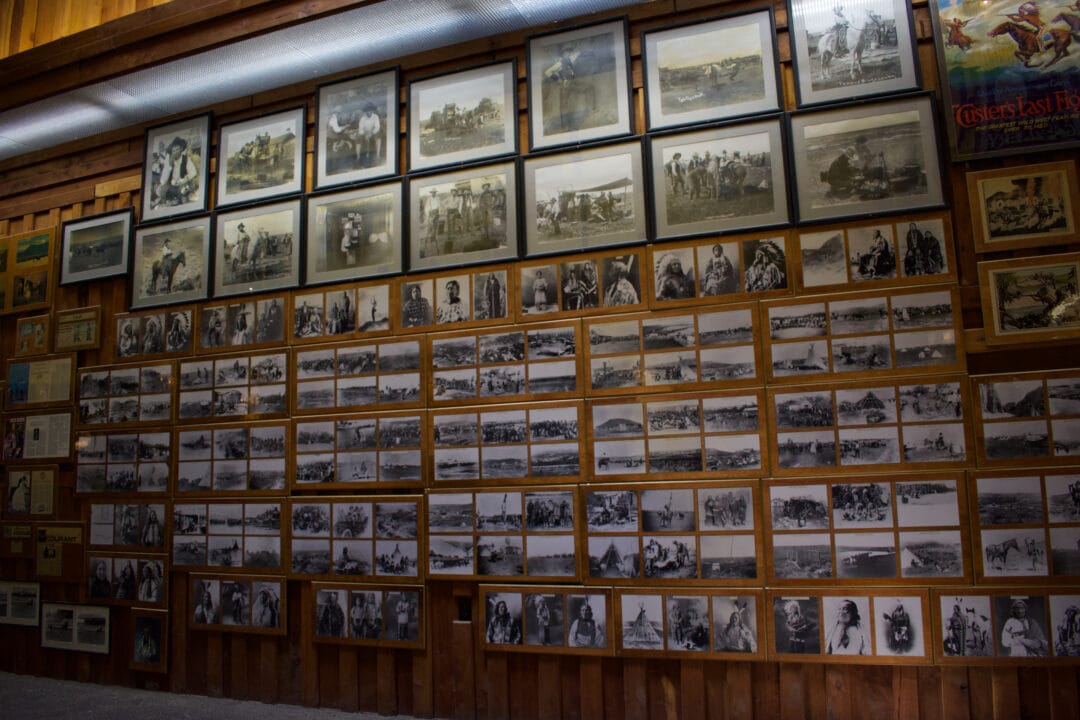
Every so often, one encounters a plaque among the photos that tells a longer story. On my most recent visit, I spent some time reading about the life, career, and legacy of William Illingworth, the English-born photographer who was hired to document Custer’s 1874 expedition into the Black Hills. Ultimately, I spent far more time examining pictorial histories than I had planned. It would not be enough to say my curiosity had been piqued—it was only stroked.
I reach out to Rick Hustead, grandson of Wall Drug founders Ted and Dorothy Hustead, to see what I can find. After taking a stroll through the store, he estimates there to be more than 25,000 items hanging on the walls of Wall Drug. The tradition was kickstarted many decades ago, with U.S. service members sending “This-many miles to Wall Drug” photos home from the European theater during World War II (which also helped make the store a household name).
Decades later, Hustead says those snapshots keep coming in: “We get pictures from customers all the time.” A great many can be seen on display in the store. When it comes to everything else, Rick credits his father, Bill, for the proliferation of curiosities that give character to the walls of Wall Drug today. Apparently, he began hanging things “he thought customers would find interesting,” like articles, photographs, and artifacts, and just never stopped.
Something different
Of the collection, Rick says, “They’re part of our history. They’ve been the main voice of Wall Drug for probably 45 years.” Considering the hodgepodge nature of the collection as a whole, I ask if his father had any organizational principles in mind. “No,” he says with half a chuckle. “He hung them up as he saw fit.” I assure Rick I don’t see that as a weakness, but rather, more of an impelling force. I usually find myself lost in the oldest, most yellowed photos, endlessly intrigued by what I might find next. “You run into something different all the time,” Rick says.
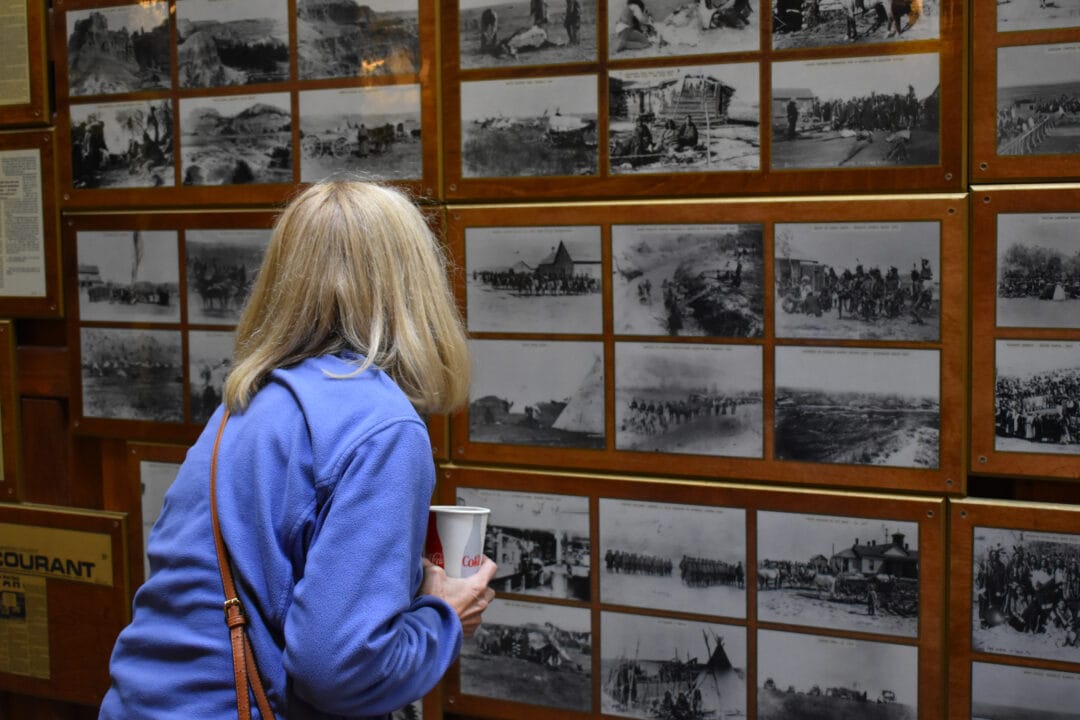
That’s exactly what happens when I stumble upon the Illingworth exhibit. Several of his images are downright famous, and I’ve seen them here and there throughout my life. But suddenly, here’s a name (and troubled life story) I could attach to them. And that’s when the importance of such a visual history smacks me in the face. Not only did Illingworth document the military’s activities of the 1874 expedition, he captured the pre-settlement condition of the Black Hills in his landscape shots.
I learn that land managers have been using those historical images to inform forest management to make tomorrow’s trees more resistant to fires and insect pests. Illingworth likely had no such intent when he opened the shutter almost 150 years ago. But art has a knack for connecting the past, present, and future, no matter who creates it or where it ends up.
The Badlands, Black Hills, and beyond
Wall Drug transmits its strong, proud sense of place through its original art and old photographs, inviting visitors to learn something about history and humanity. Its commitment to making local history accessible is unrivaled by any other roadside attraction I’ve visited (especially those free of charge). You don’t always get what you pay for, but in sights-per-square-foot, Wall Drug is more than worth your time and attention.
It’s fair to say that the Hustead family’s rows upon rows of old pictures pulled me in and inextricably transformed how I see the prairie, the Badlands, the Black Hills, and beyond. The next time my wife and kids comb through t-shirts and other treasures, you can bet I’ll get lost in my memory, somewhere among the creaky wood floors, observing a cattle drive or shopping in a frontier dry goods store. I may even take a trip on a steam locomotive, visit a family in front of their dugout home, see what “new” farming equipment looked like in the 1890s, or learn about the likes of Crazy Horse and Hollow Horn Bear.
Planning a trip to Badlands National Park
But first, I’ll grab some nickel coffee and extra donuts—maple preferred. I think I’ll stay for a while.
If you go
Wall Drug consists of a store, a cafe, the Western Art Gallery Restaurant, mall shops, and a pharmacy for travelers. The store and cafe are open daily at 8 a.m.; the store closes at 6 p.m., and the cafe closes at 5:15 p.m. And yes, the ice water is free.


